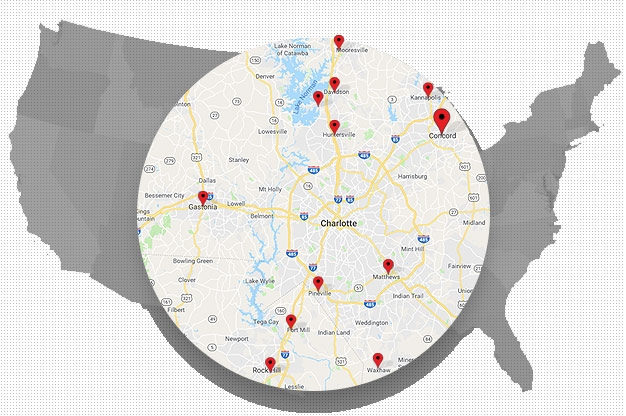Diving Into The Ins And Outs Of Waterproofing A Basement

On average, it can cost anywhere from $500 to $10,000 to clean water out of a flooded basement. The price is heavily impacted by the amount of damage that has occurred and how much water is in the space.
To save yourself the stress and shock of having to pay such high prices, you might want to learn about waterproofing a basement.
It’s not easy to predict if and when your basement is going to flood. By being prepared, you can save yourself a lot of frustration and unnecessary costs.
Read on to discover some basement waterproofing tips for your home.
What Does Waterproofing a Basement Entail?
In theory, making your basement waterproof means you go in and seal the walls, floor, and ceiling to prevent water from leaking into the area.
In practice, it’s much more complicated than this.
Determining the best way to waterproof your basement requires knowing the extent of water damage that might or has already occurred, and whether or not water is currently seeping in.
Knowing this will allow you to put a plan in place so that you can keep water out of your home and from damaging your belongings. It will also ensure that you aren’t spending too much on the waterproofing process.
While you want waterproofing your basement to be cheap, you also want it to be effective. Calling in a professional to have them inspect and determine the cause of moisture issues in your basement is probably in your best interest.
Identify Where the Water Is Coming From
Some of the most common ways water gets into your basement are from outside sources, including downspouts that don’t extend far enough away from your home.
Should this be the cause, fixing it is relatively easy. All you have to do is get downspout extenders that direct water away from your foundation.
It’s also possible that the slope of your yard is off. If the ground angles toward your house, then water will flow into your basement. Whenever it rains or you run your sprinklers, you may find water in your basement.
To solve this problem, you may need to build up the ground around your house to stop the water from flowing into your basement. The more involved solution to this problem is that you may need to change the entire angle of your yard to drain the water away from your home and into the street.
Temporary Basement Waterproofing Solutions
Once you have determined how much damage water is causing in your basement and where the water is coming from, you can then find the right solution for keeping your basement dry.
If you are looking for cheap waterproofing tips, there are several different options to choose from. These include the following:
Add a Dehumidifier
If your basement doesn’t have a huge amount of moisture in it, then you can always add a dehumidifier to the space.
These are designed to pull the extra moisture out of the air. They can help reduce mold growth and get rid of musty smells.
Seal Your Basement
There are many different ways to seal your basement, and this is an effective way to close up cracks, gaps, or holes that might allow water into your space.
If moisture seems to be seeping through the walls in your basement, then using a paint that will seal the entire wall might be in your best interest.
Should you notice that water is coming through cracks or holes, then using an epoxy-based resin and caulking gun to cover this could be the best way to keep your basement dry.
Opt for Drainage Mats
These can be installed on your basement floor or along the walls. They pull water away from your belongings, so they are useful in keeping items that you store in your basement dry.
Drainage mats can be used if you experience more water than what a dehumidifier can handle. However, they aren’t useful during major flooding events.
A More Permanent Waterproofing Solution
Should you find that you are constantly having to deal with a large amount of water in your basement, you may need to look for a more permanent waterproofing solution.
To ensure that this job is done correctly, you will need to work with a professional.
One of the most common permanent solutions that helps get water out of your basement is the installation of a sump pump.
What Are Sump Pumps?
Sump pumps work by actively pulling standing water out of your basement. They are installed in the lowest part of your basement. Once the water reaches a certain level, this turns the pump on. The water is then flushed out of the pit and away from your home so that your basement stays dry.
Sump pumps are a good option if you get a substantial amount of water in your basement from rain or that seeps through the ground.
A sump pump works automatically, so you won’t have to do much to ensure that water is removed from your basement on a regular basis.
How Are Sump Pumps Installed?
Installing a sump pump is a bit of an involved process. It requires a professional using a jackhammer so that they can create the pit where the sump pump will be installed.
They may also need to add a sub-floor drainage system. This will be put in place to direct the water to the pump so that it can be flushed out of your basement and away from your home.
While they are there, the professionals may also check your basement walls for any cracks or leaks. To ensure your basement stays dry, they should fill these cracks.
They may also install vapor/moisture barriers in your basement. These barriers are made from a few different materials. The most common are foam insulation and polyethylene plastic.
Moisture barriers are generally placed on your basement walls and the floor to keep water from seeping into the space and causing damage to belongings or the structure.
Working with Professionals
When it comes to waterproofing a basement, it’s important to know where the water is coming from and how much damage it’s doing. This will help you determine the best method for keeping your basement dry.
At Sedona Waterproofing Solutions, we have the skills and expertise to find and fix any water issue you might have. Contact us today!
Recent Posts
- Structural Repair Solutions for Crawl Spaces, Basements, and Foundations
- Essential Crawl Space Repair Tips Every Homeowner Should Know
- The Importance of Radon Mitigation: Ensuring a Safe Living Environment for Homeowners
- How Crawl Space Encapsulation Can Protect Your Home from Water Damage
- A Comprehensive Guide for Homeowners: All You Need to Know About Crawl Space Encapsulation
Categories
- Basement Mold
- Basement Waterproof Foundation
- Basement Waterproofing
- Crawl Space Dehumidifier
- Crawl Space Encapsulation Cost
- Crawl Space Repair
- Crawl Space Waterproofing
- Encapsulation
- Foundation Repair
- Foundation Waterproofing
- French Drains
- Leaky Basement
- Mold Remediation
- Mold Removal
- Radon
- Slab Jacking
- Sump Pump
- Uncategorized
- Vapor Barrier
- Water Leak
- Waterproofing
- White Mold
Archives
- March 2024
- January 2024
- June 2023
- May 2023
- April 2023
- March 2023
- February 2023
- January 2023
- December 2022
- November 2022
- October 2022
- September 2022
- August 2022
- July 2022
- June 2022
- May 2022
- March 2022
- February 2022
- January 2022
- December 2021
- November 2021
- October 2021
- September 2021
- August 2021
- July 2021
- June 2021
- May 2021
- April 2021
- March 2021
- February 2021
- January 2021
- December 2020
- November 2020
- October 2020
- September 2020
- August 2020
- July 2020
- June 2020
- May 2020
- April 2020
- March 2020
- February 2020
- January 2020
- December 2019
- November 2019
- October 2019
- September 2019
- August 2019
- July 2019
- June 2019
- May 2019

